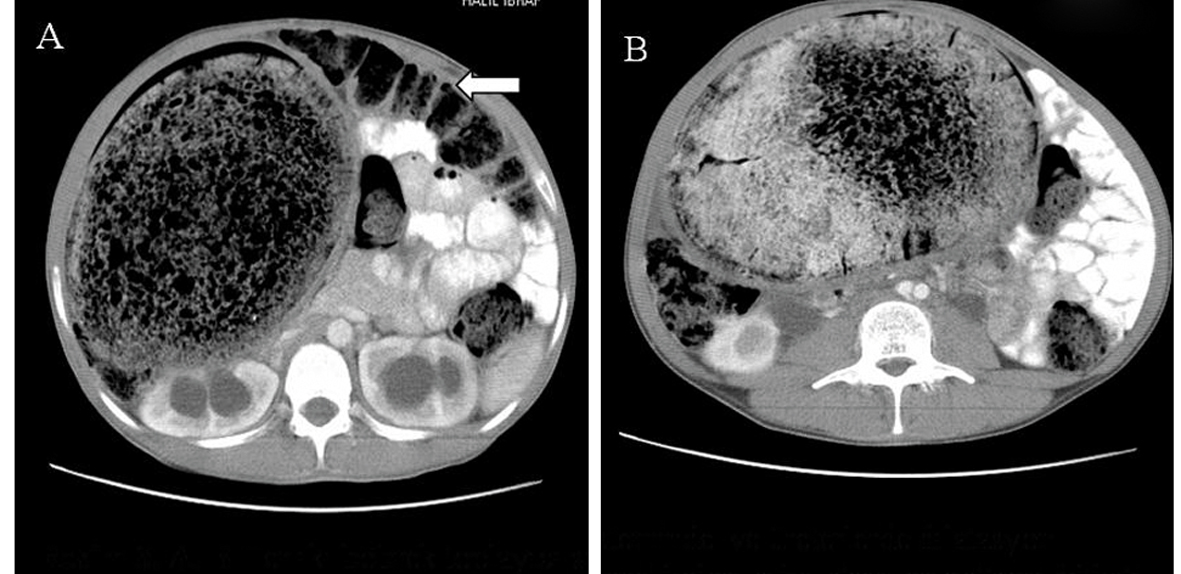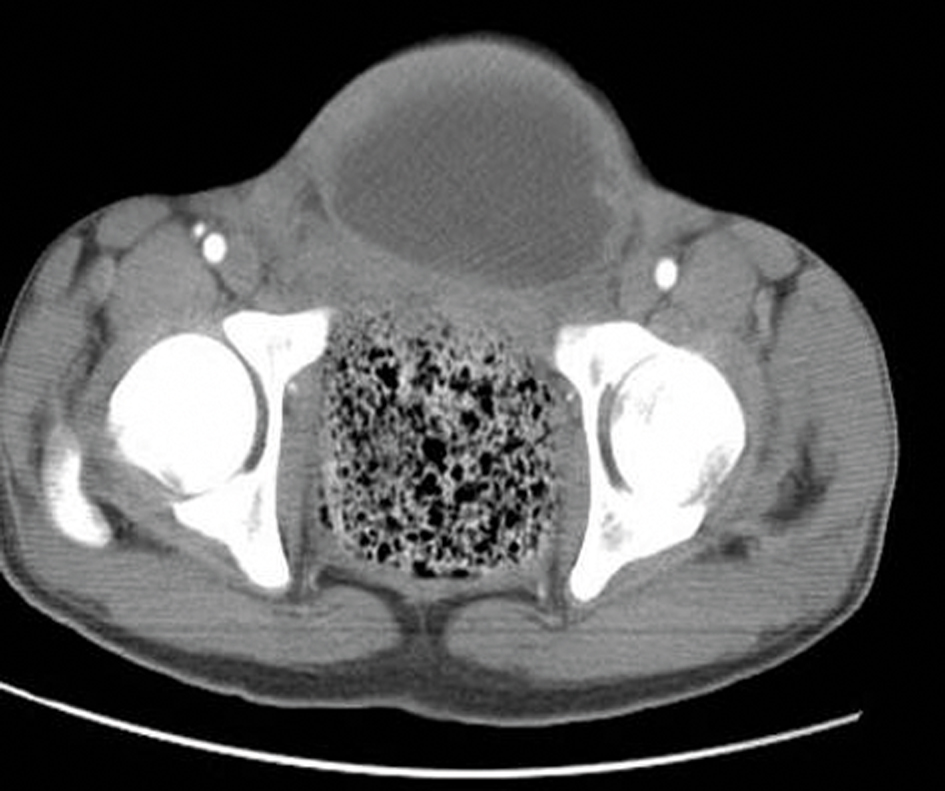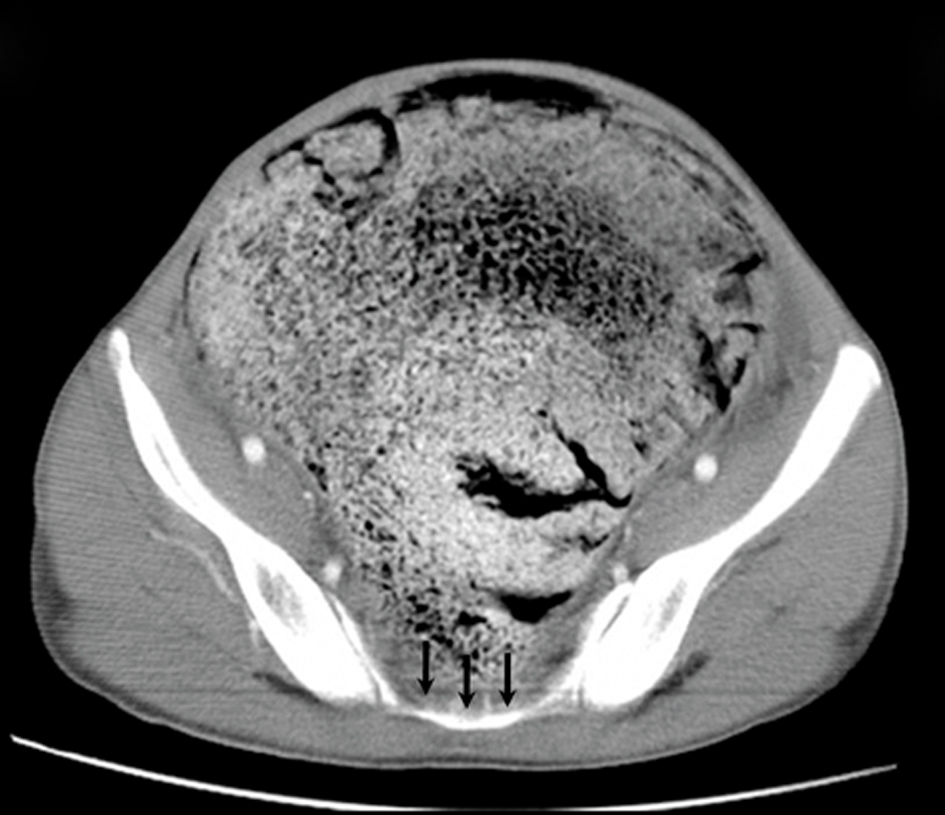
Figure 1. An axial CT scan shows the huge, dilated, non-haustrated sigmoid colon (white arrows), bilateral dilated urinary calices, and ureters (black arrows). The thickness of the bowel wall is normal, and there is no contrast enhancement. The compressed and displaced small bowel on the left side of the abdomen can also be seen.

Figure 2. A, B. Axial CT scans show the huge, dilated, non-haustrated sigmoid colon. The loops of the large bowel are also dilated and filled with feces. They are not filled with oral contrast material, and their normal haustration pattern is preserved. The compressed and displaced small bowel on the left side of the abdomen is also shown.



